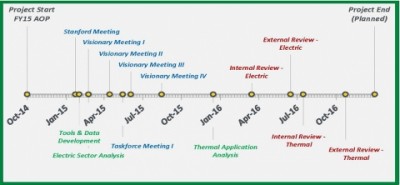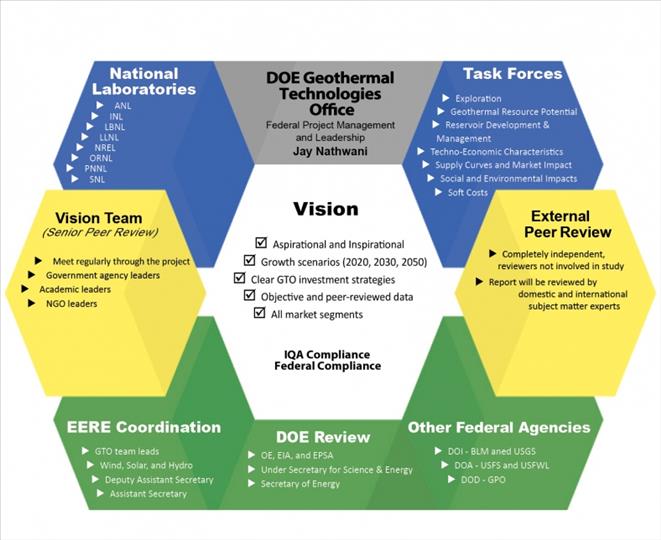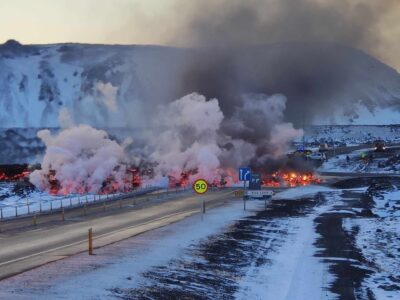Geothermal Vision study by US DOE
GeoVision will conduct a credible analysis of potential geothermal growth scenarios for 2020, 2030 and 2050 across multiple market sectors.
The Geothermal Technologies Office (GTO) at the United States Department of Energy has undertaken a vision study—called GeoVision—to conduct a credible analysis of potential geothermal growth scenarios for 2020, 2030 and 2050 across multiple market sectors. By engaging the geothermal industry in this dialogue, GTO anticipates a product that will benefit the entire industry:
- Clearly articulated GTO investment strategies across different sectors, with a cohesive plan to attain near-term and stretch goals
- Relevant geothermal growth scenarios for 2020, 2030 and 2050, backed by robust data, modeling, and analysis
- Comprehensive approach, inclusive of all market segments: existing and potential hydrothermal, electrical and non-electrical uses, burgeoning EGS advances, and other value streams
- Accessible objectives and peer-reviewed industry data, supportive of and available to geothermal decision-makers in policy, permitting, and development capacities
- Aspirational and inspirational goals
SCOPE
Market sectors under review include existing installed capacity and the potential for new geothermal electric generation, thermal applications, and additive value streams. The study will be based on robust data, modeling, and analysis, and a diverse group of industry peers called the Visionary Team will review these data multiple times during this effort. The multi-phase effort culminates in a final report that will be issued in 2016, This strategic analysis will establish geothermal growth potential and further position this sector to play a key role in the national energy and climate change priorities.
Focused on the electricity sector during the first full phase of the study’s scope, the Geothermal Vision Study will evaluate current state of the art in conventional (hydrothermal) geothermal electricity generation before expanding to the broad range of technologies and resources under development that target cost and risk barriers. These applications include, but are not limited to, enhanced geothermal systems (EGS), low-temperature and coproduced systems, sedimentary and geo-pressured systems, and hybrid power systems. The electric sector portion of the study will be completed by 2016. During this time, tools and data will be developed for non-electric geothermal applications, including direct use, mineral extraction, desalination, in anticipation of a second phase to be completed in 2017.
TASK FORCES
Click here to see the scope of seven specific topics under study by geothermal stakeholders, led by a team member from a national laboratory.

CONTACT
For more information, or to get involved, please email us at: geothermal.vision@ee.doe.gov.
Source: Press Release by US DOE


















